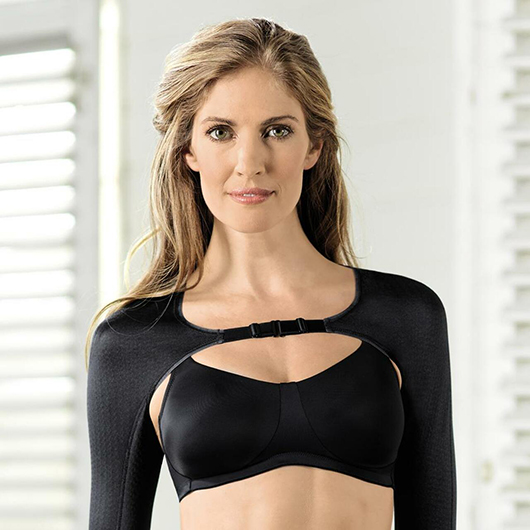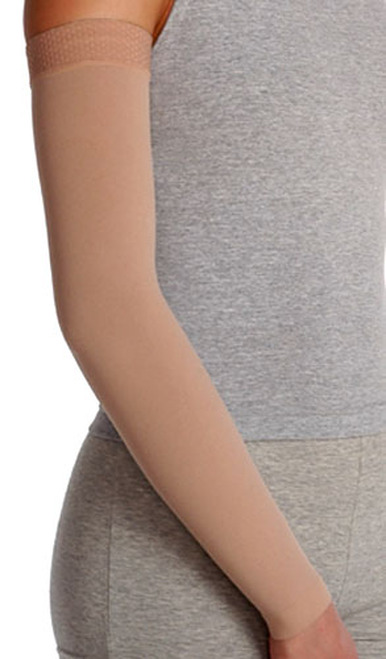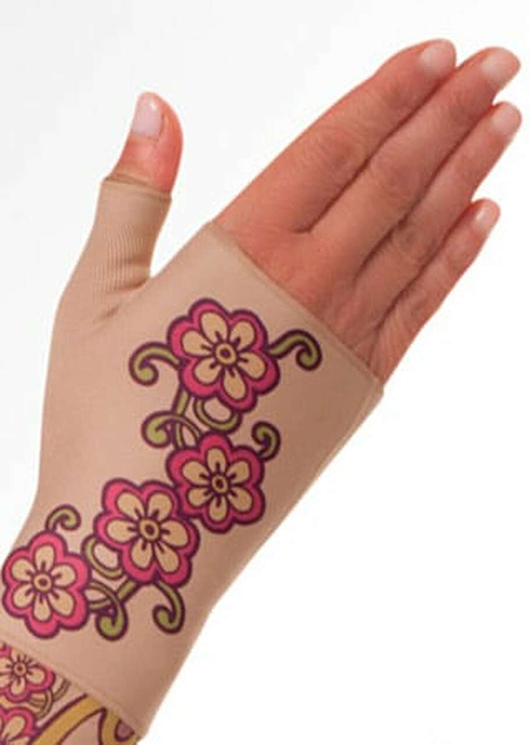Can You Sleep in a Lymphedema Sleeve?
Feb 22nd, 2022
In addition to mastectomy or lumpectomy procedures, many breast cancer patients need to undergo other cancer treatments to remove cancerous cells that have spread beyond the breast tissue.
Radiation therapy or chemotherapy damages the lymph nodes, and lymph node removal surgery can block the flow of lymph fluid around the body. Damaged or blocked lymph vessels can lead to breast-cancer-related lymphedema.

What is Lymphedema?
Lymphedema is characterized by excessive swelling in an appendage, such as an arm or a leg. Lymphedema can be painful and lead to infection because white blood cells and cellular debris can’t circulate through the body and be eliminated.
While there is no cure for lymphedema, specialists can treat symptoms through Complete Decongestive Therapy (CDT). This treatment plan incorporates:
- Manual lymph drainage (MLD) massage
- A physical exercise program to stimulate the lymphatic vessels
- Skin infection management
- Wrapping the site in multilevel compression bandages
Once swelling in the affected arm is significantly reduced, you can be fitted for a compression sleeve.
Types of Compression Sleeves
If you are scheduled to undergo breast cancer surgery with a high risk for lymphedema, such as an axillary lymph node dissection (ALND), or you require a post-surgical breast cancer treatment like chemotherapy, your doctor may recommend a light compression sleeve. You can wear a light compression sleeve immediately after surgery as a preventative measure.
They may also refer you to a lymphedema therapist for a more in-depth analysis. A physical therapist or lymphedema specialists can recommend different types of compression sleeves and levels of pressure to suit your symptoms.
Levels of compression
Compression garments come in varying pressure levels. Pressure is measured in milligrams of mercury (mmHg). Different pressure levels are suitable for treating various circulation issues, from mild to severe lymphedema.
The lightest compression sleeve available in North America is a class I sleeve that places 20-30 mmHg of force on your arm. Class II sleeves offer 30-40 mmHg, while class III and IV typically require a prescription because they exert up to 60 mmHg of pressure.
Full compression sleeves
Full compression sleeves start at your wrist and end at the juncture between your shoulder and chest. These sleeves provide graduated pressure from the wrist that slowly becomes lighter toward the shoulder.

The Juzo Soft Sleeve comes in 20-30 mmHg and 30-40 mmHg compression levels to effectively treat mild to moderate lymphedema. The smooth silicone border keeps the sleeve in place without pinching or digging in. It is available in a variety of neutral shades to blend discreetly with any outfit.
Gauntlets
Gauntlets are fingerless gloves that are designed to complement a compression sleeve. While most lymphedema symptoms are felt in the upper arm and forearm, if you experience mild lymphedema symptoms like heaviness, tingling, or numbness in your hands, your doctor may recommend pairing a gauntlet with your compression sleeve.
You must wear your gauntlet correctly. Too much overlap between the gauntlet and sleeve can place excess pressure on the lymphatic vessels in the wrist and may worsen swelling in the hands.

The Juzo Signature Compression Gauntlets are designed to complement the brand’s Soft Sleeve garments. The polyamide-elastane blend offers 2-way stretch elasticity for optimal comfort and breathability.
Custom sleeves
Lymphedema specialists may suggest a custom sleeve for patients with longer or larger than average arms. Fit is crucial for effective compression therapy. Sleeves that are too loose won’t apply enough pressure, while overly tight sleeves can cut off circulation, causing numbness.
A custom garment ensures that women with lymphedema whose arms don’t fit standard sleeve sizes can receive proper treatment.
Can I Wear a Compression Sleeve While Sleeping?
For mild lymphedema, daytime compression therapy is usually sufficient to reduce lymph volume in the affected limb and alleviate painful symptoms. However, your doctor may suggest wearing a compression sleeve at night while sleeping for severe lymphedema.
Although daytime compression garments are designed to be comfortable, they are unsuitable for wearing while sleeping. Daytime sleeves feature silicone or elastic bands at the shoulder, elbow, and wrist to keep the sleeve in place.
The gradient pressure created using a compression sleeve is designed to work while you are active and moving around. The pressure points in the sleeve stimulate the lymphatic vessels and move lymph fluid toward the heart.
When lying in bed, your body doesn’t need to fight gravity to circulate blood and lymph, so a compression sleeve at night is usually unnecessary and could be dangerous.
Wearing a daytime compression sleeve in bed could cause unintentional bunching, folding, or shifting, which could cut off blood flow to the limb and cause more complications.
You should only wear a specialized nighttime compression garment with the lowest possible compression level to bed to minimize the risk of circulatory problems. If you find you need more support at night, speak to your doctor or lymphedema therapist for recommendations.
Numerous resources about nighttime lymphedema management are available through the National Lymphedema Network and Lymphatic Education & Research Network.
What is Overnight Compression Wear?
Overnight compression wear consists of sleeves and stockings that don't fit as snuggly to your skin as their daytime counterparts. These garments allow your skin and muscles a break from regular compression therapy while also providing light pressure to stimulate lymph flow.
Typically, sleeves meant for overnight wear are bulkier and larger than daytime compression wear. They usually have padding and adjustable straps to allow the wearer to control the amount of compression applied to the affected limb. They're great for both full compression and gradient compression use and can also be worn during the day or when you just need a bit of break from your standard compression sleeve.
Because of the materials used to build these compression garments, they tend to be more expensive than daytime models. If the price is a concern, speak to your doctor about a prescription to have your insurance cover the cost.
Who Benefits from Nighttime Compression?
Anyone who wears a compression garment during the day may also benefit from nighttime use. If you feel like you could get more out of your lymphedema management or if you've noticed changes during the day in the amount of swelling you experience, then it may be a good idea to try nighttime compression wear.
Nighttime compression garments are the perfect choice for people who experience creeping refill overnight. Typically, swelling in the arms reduces overnight, but for some people with severe peripheral lymphedema, lymph fluid can build up again while sleeping.
Treat Breast Cancer-Related Lymphedema With Mastectomyshop.com
If you are at high risk of lymphedema after breast cancer, compression therapy is vital for the care and treatment of post-surgical swelling. While caring for swollen limbs during the day can be achieved with high-quality daytime sleeves, anyone who struggles with discoloration or swelling overnight could benefit from an overnight lymphedema sleeve.
At Mastectomyshop.com, we offer a wide variety of sleeves for daytime wear in several compression levels to meet your health needs. Explore our range online, and talk to our experienced staff to determine which sleeve is right for you.



